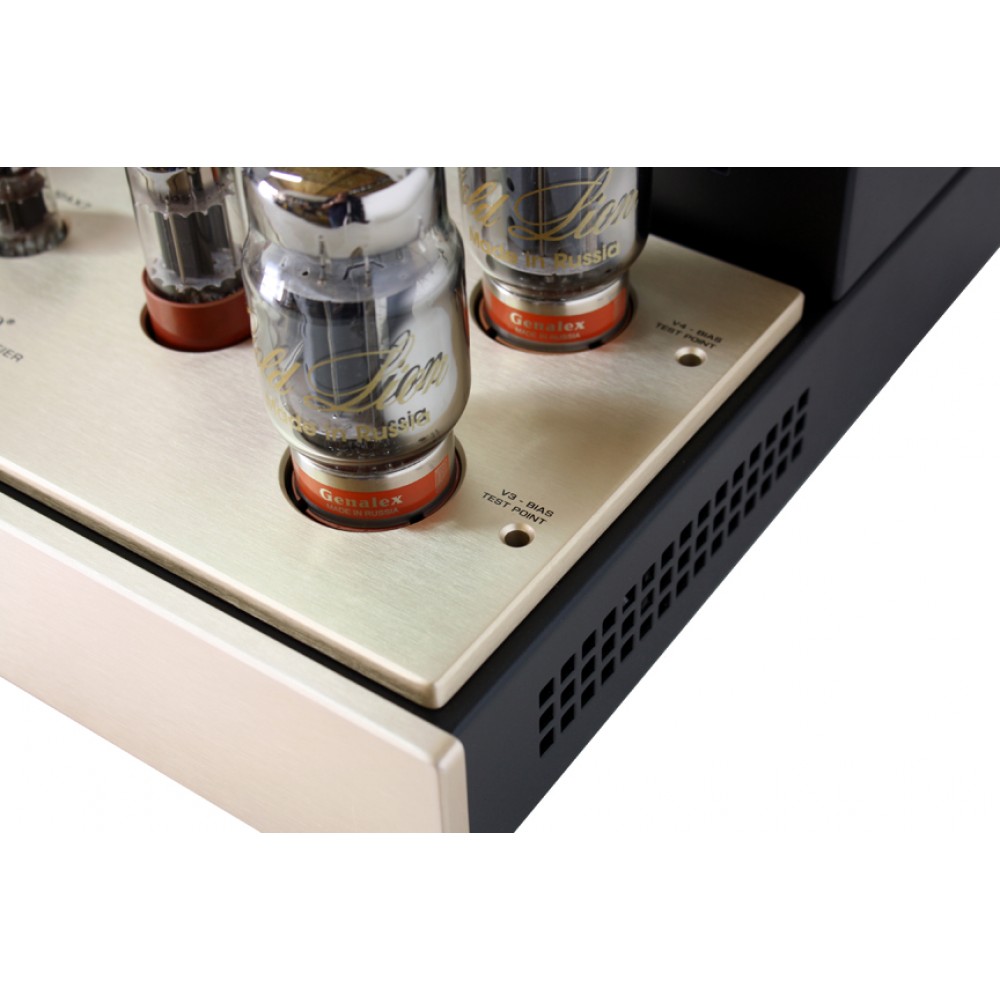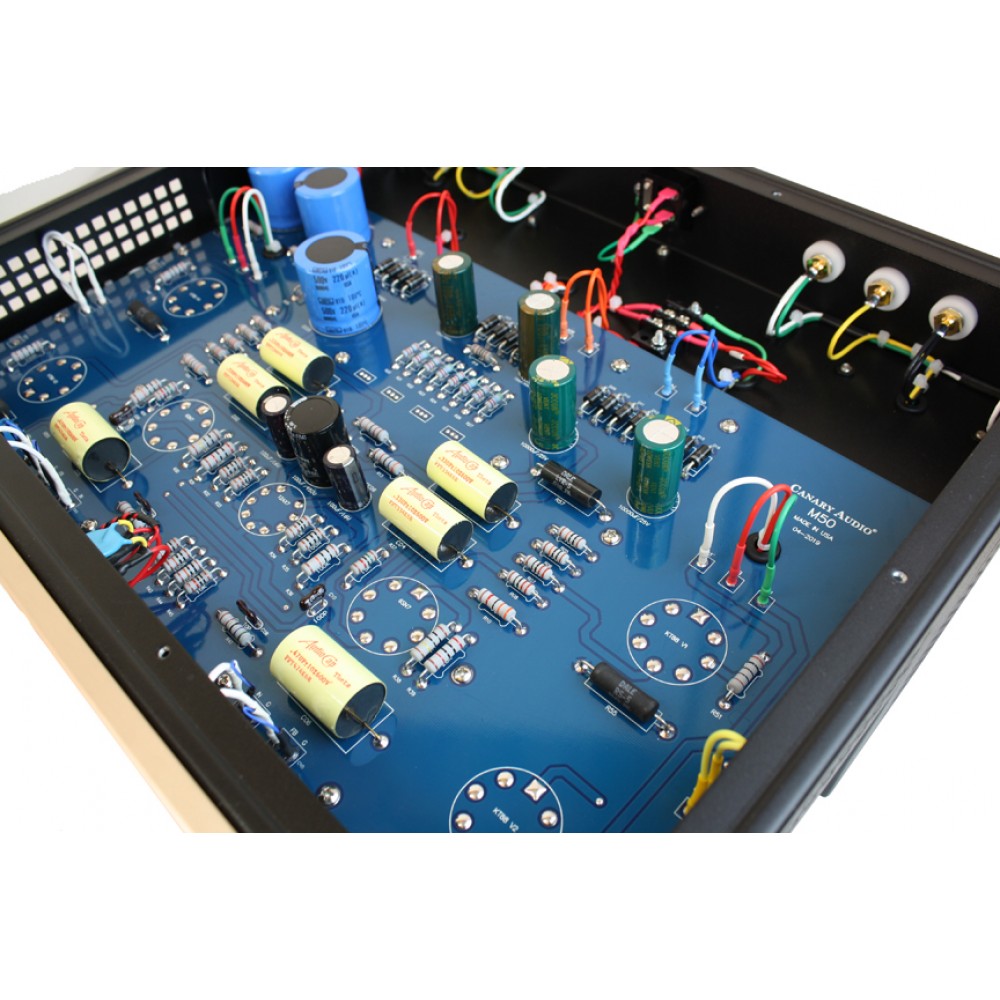
The faceplate has, from left to right, four toggle switches (power on/off, standby, mode, and input) along the lower part, with a blue information window on the upper part. (I’d welcome more color departures from black chassis. I thought the combination of the brushed aluminum faceplate and transformer trim plate with the red paint on the chassis looked quite elegant and attractive. The red color is not a garish, bright hue, but sort of a candy apple red. In a departure from the norm, the chassis is painted red instead of the usual Boring Black.
Sound reference kt88 tube power amp full#
The Corona is built on a wide, flat chassis with a silver, brushed-aluminum faceplate in the front, tubes in the central area, and in the rear a transformer that spans the full width of the chassis. The Corona has the typical integrated amp advantages: It requires no preamp-to-amp interconnect, and it occupies just a single shelf, albeit a very sturdy, well-ventilated shelf. Rogers makes a very interesting phono preamp, the PA-2, which is definitely worthwhile considering to match to the Corona, but doesn’t offer a DAC or headphone amp. You know exactly which of those units suits your system, and don’t want to waste money on the type of limited or compromised integral DAC, phono preamp, or headphone amp that’s typically included in some integrated amps. This makes sense to me if you’re willing to shell out $15,000 for the Corona, you’re probably a very serious listener who wants an advanced stand-alone DAC, phono preamp, and headphone amp. There’s no DAC, no phono preamp, no headphone amp. The Corona deliberately leaves out features that can be found on several other integrated amps. Just specify when you buy the amp which output tubes you want. Rogers High Fidelity’s new Corona KWM-88 integrated amplifier’s automatic bias circuitry makes it possible to switch between KT88s and KT150s. Just insert the new tubes and the bias circuitry changes the necessary parameters. So if an amplifier is shipped with E元4s, you can change them to KT88s and the automatic-bias circuit will adjust the bias to suit the KT88s with no adjustment from the user. Those circuits make it feasible to switch easily between different types of tubes. One of the more recent computerized hi-fi circuits sets the bias current of the output tubes on tube amplifiers. Your car is full of computers that make it easier to operate and maintain why shouldn’t your hi-fi follow suit? Increasingly, that’s what’s happening.

The best of vintage sound combined with modern construction and componentry.

Look for some really exciting products from Cayin and VAS, representing stunning value for the audiophile. They looked great - they sounded even better. These products offer great sound at unbelievably affordable prices, while the Citation-2 monos take retro-cred to new levels of audiophile drool-worthiness. Our initial amazement gave way to an easy, relaxed enjoyment that was sustained for hours without a trace of that tension known as listening fatigue." "There is solidity, combined with a total ease and lack of irritation that sets this amplifier apart from most others." "There were a variety of interesting and outstanding Cayin products in the room including the A-88T integrated amplifier, the 265A 40 Watt Class A integrated and VAS Citation 2 mono-bloc amplifiers. Reviewers wrote of the original: "The realism of the virtually distortion-free music was nothing less than startling.

It is available in 2 variants: E元4 for warm, smooth music & KT88 for power. It offers a compact size, yet is powerful enough drive almost any speaker. This classic is reborn in with top-of-the-line components, hand wiring and state-of-the-art transformer technology. The VAS Citation-Two tube mono block power amplifier is a Harmon/Kardon Citation II design.


 0 kommentar(er)
0 kommentar(er)
